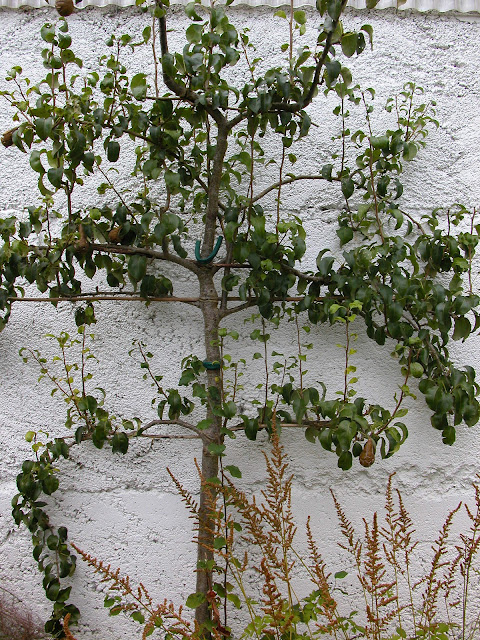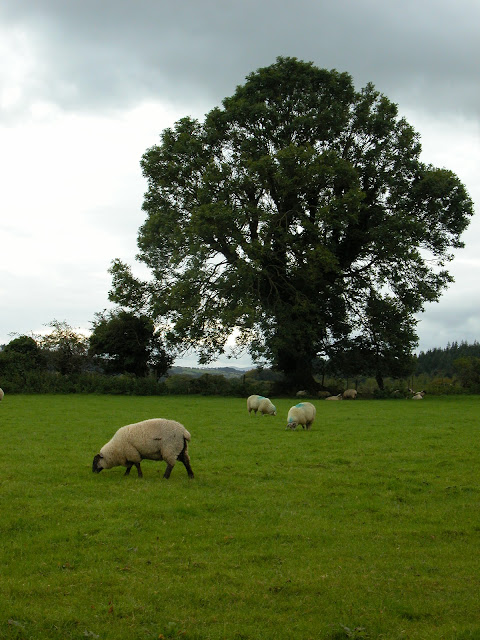 Day 10 – Thursday, September 27:
Day 10 – Thursday, September 27: Kilkenny/Ashford (Dublin)
Left hotel 10:00 AM
Glendough for lunch-snack break
While renowned for it’s magnificent scenery Glendalough is also full of a rich and varied heritage in terms of history, monuments, archaeology, architecture, landscapes, geology, parks, flora, fauna, wildlife habitats & mining history.
The Glendalough Valley was carved out by glaciers during the Ice Age and the two lakes, from which Glendalough gets its name, were formed when the ice eventually thawed. The Valley is home to one of Ireland’s most impressive monastic sites founded by St. Kevin in the 6th Century.
Situated in the Wicklow Mountains National Park, the area is a haven for wildlife and their habitats, flora and fauna.
The remains of the Glendalough Mines and Glendasan mines can be found both inside and outside the Park
 The ‘City’ consists of a number of monastic remains, and the most impressive being the Round Tower
which stands 30m high. The main group of monastic buildings lies
downstream near the Round Tower. The grounds were entered through the
Gateway, which has two round headed granite arches.
The ‘City’ consists of a number of monastic remains, and the most impressive being the Round Tower
which stands 30m high. The main group of monastic buildings lies
downstream near the Round Tower. The grounds were entered through the
Gateway, which has two round headed granite arches. Beyond St. Mary’s Church is the Priest’s House, a 12th Century building in Romanesque style, with an interesting carving of a much earlier date on the lintel of the doorway.
Just beyond the Priest's House is a large granite cross (sixth or seventh century) and the "Cathedral", the largest church on the site, with a nave, chancel and sacristy (11th and 12th C), and St Kevin's Church.
St Kevin’s Church is commonly known as St Kevin's Kitchen. This is a barrel-vaulted oratory of hard mica schist with a steeply pitched roof and a round tower belfry (12th C).
Approx 200m east of the Church of the Rock is a cavity in the cliff which is known as St Kevin's Bed or Hermitage.
At the Glendalough site on the road to Laragh, to the right, stands Trinity Church (11th-12th C). Beyond the river about 1.5km to the east of the Cathedral is St. Saviour’s Priory a church with fine Romanesque carvings on the chancel arch and windows.
The remains of an old stone fort and three stone crosses can be found between the Upper and Lower Lake, and beside the Lower Lake another cross; all four are stations on the pilgrimage route at Glendalough. Near a small bridge by St Kevin's Bed stands Reefert Church (11th C.) with a nave and chancel.
And our final destination of the day was at an Ireland know celebrity and television personality cooking school. Arrived at Ballyknocken House and Cookery 1:45 PM
Award-winning Ballyknocken Cookery School is home to TV Chef and Food Writer, Catherine Fulvio, and is scenically located on a 350 acre farm a short drive from Dublin City Centre in County Wicklow, Ireland.
Ballyknocken Cookery School is a centre for culinary learning. Catherine’s style of cooking is modern Irish,with an emphasis on local and seasonal ingredients. The Cookery School offers a wide range of cookery classes, including Catherine's Southern Italian Kitchen and seasonal favorites including BBQ & Outdoor Dining to Fabulous Mains & Desserts and our Head Chef Junior Chef where adults and children cook together in the kitchen.
The Cookery School at Ballyknocken is a centre for learning culinary skills. The school caters for vocational, professional and personal development as well as corporate groups. At Ballyknocken Cookery School you will find a fresh, fun approach to cooking with an emphasis on hands on courses.
Chef Catherine made scones with assistants Edna and Janet. Scones were served with fresh jam and tea. They were awesome! We walked around the gardens and looked at a rare collection of farm tractors. Everyone enjoyed the visit.
Left at 3:15 PM
These are some photos of her garden and farm.
 |
| Pear tree |
The farm had so many picturesque areas to photograph.
We were tired and were ready to go to our last hotel.
Our trip back to the hotel was fun. We learned the winners of 2 contests we ran
We had a contest on the bus with writing a LIMERICK after the city of Limerick:
Did you know"
1st line
2nd line....rhyme
3rd line
4th line....rhyme
5 line rhyme with 1st
• Marianne Miller
There was a coach driver named Mike,
Who all of us really do like,
He is witty and funny,
With a smile that is sunny,
He’s half Leprechaun going on strike!
• Nan Hurst I
once had a driver in Eire,
Who let us stop to admire,
Old castles of yore,
And gardens galore,
This red-headed driver in Eire
• Marge Rushing
There once was a dutiful daughter,
Who went to fetch her mum water,
She tripped on some stones,
Broke both her wrist bones,
And that was the end of mum’s water.
Arrived at Hotel Gresham, Dublin 4:30 PM
Farewell dinner; thanked group for choosing CTD, airport procedures
Results of Kilometer game: traveled 2,647 kilometers (winners:)
• Julian Smith (2,500)
• Lisa Sheller (2,400
• Denice Fini (2,745)




























































